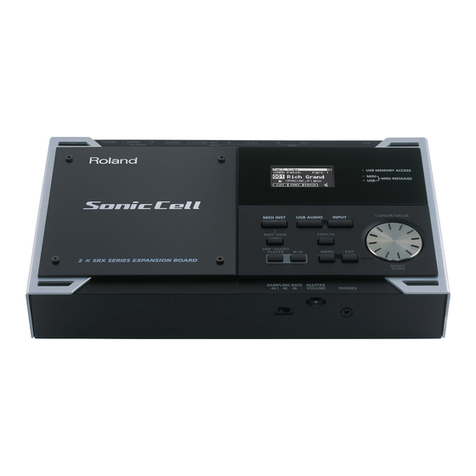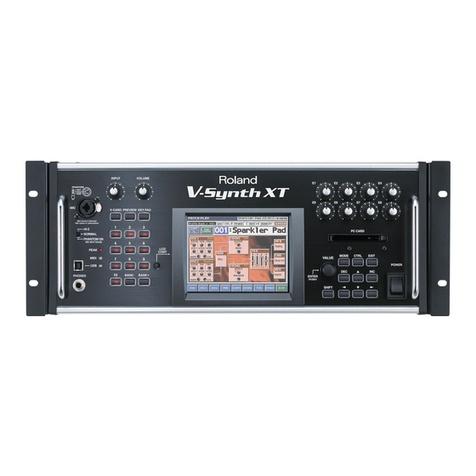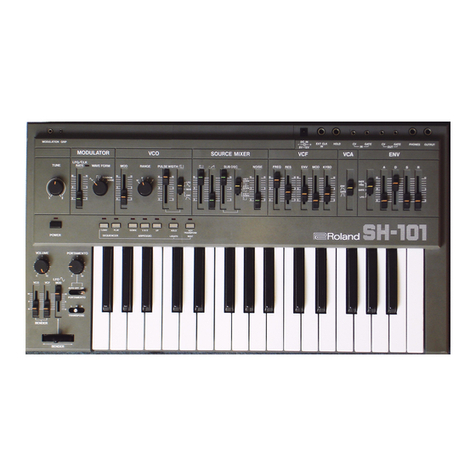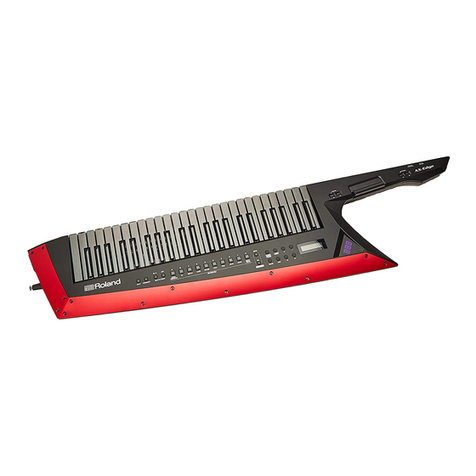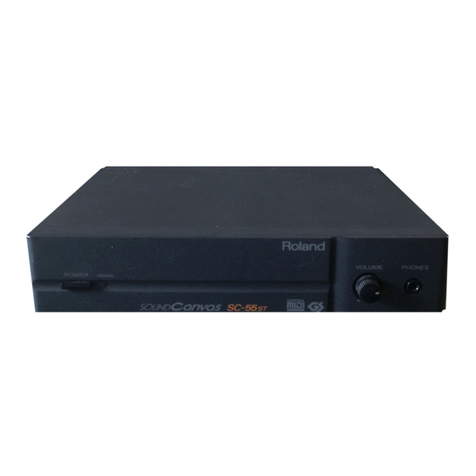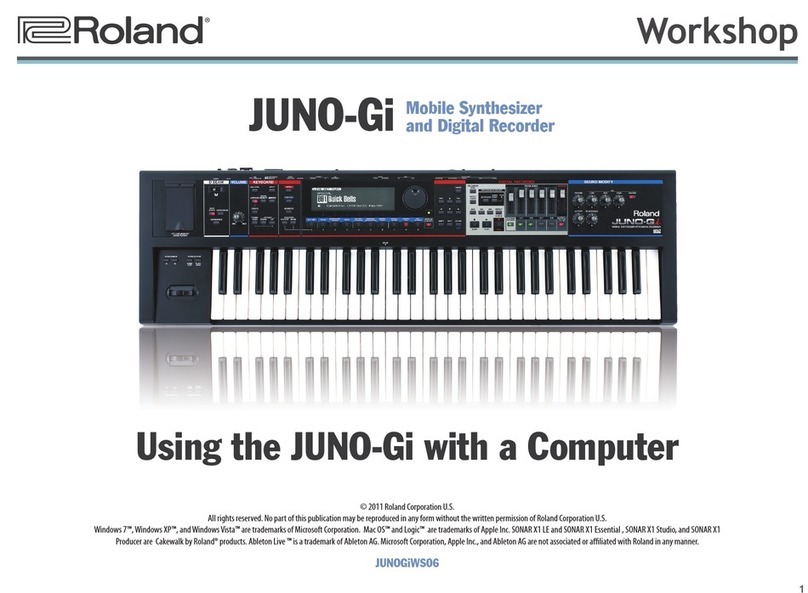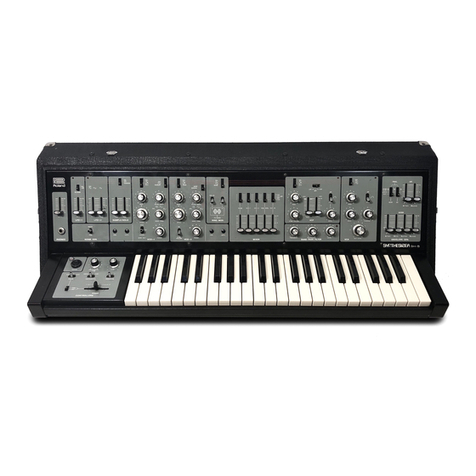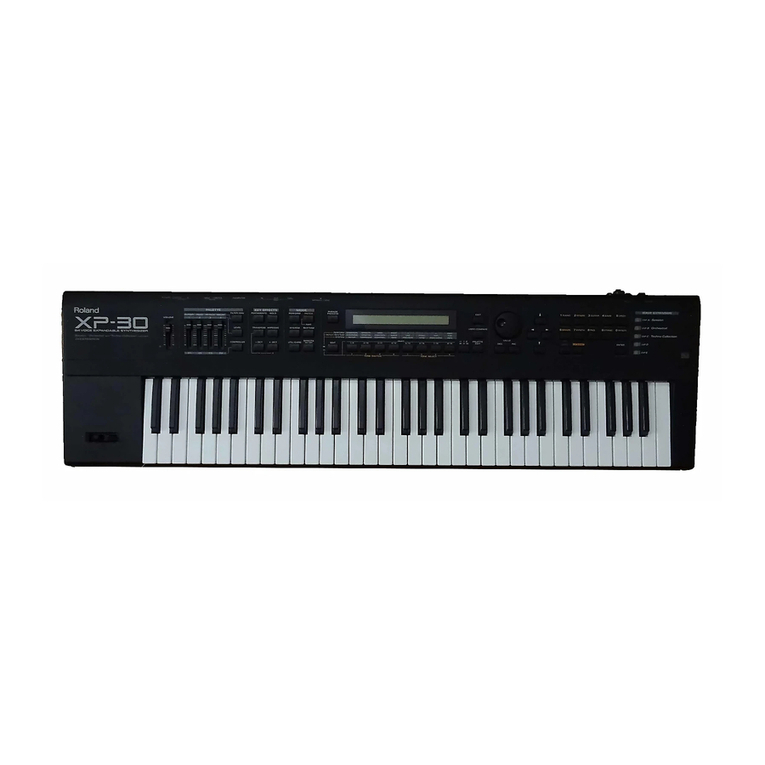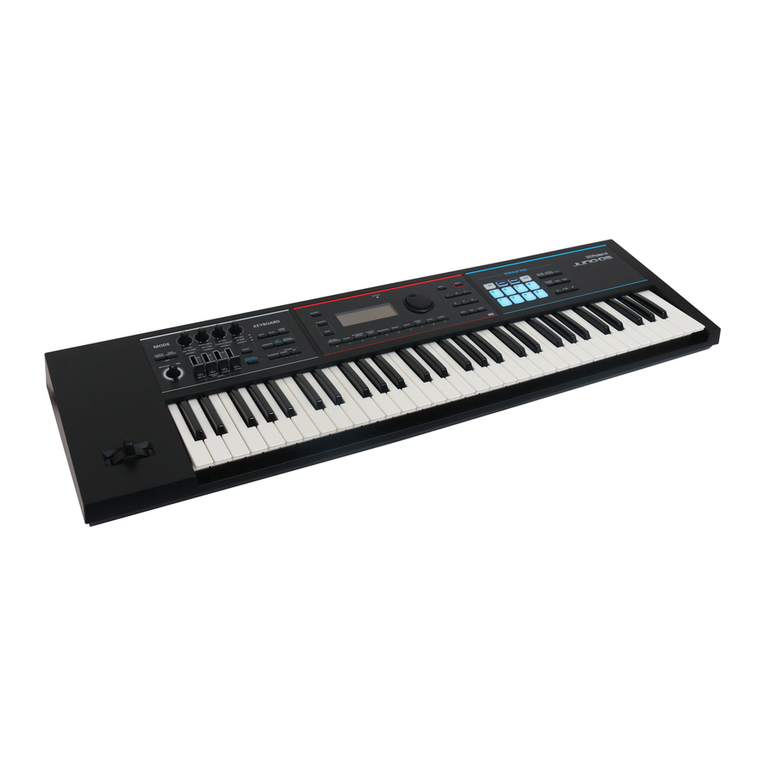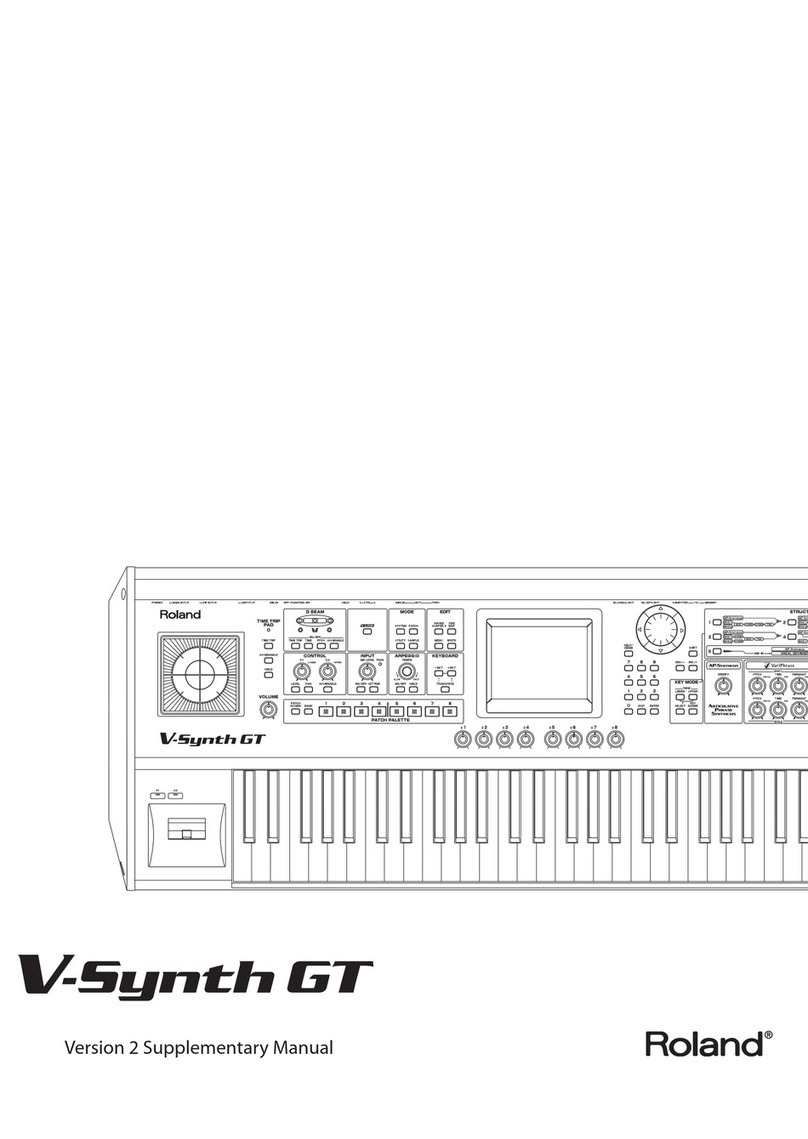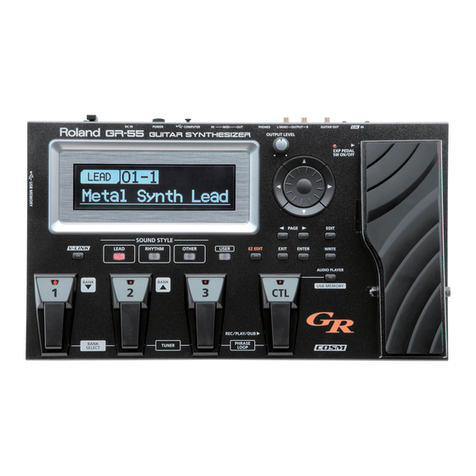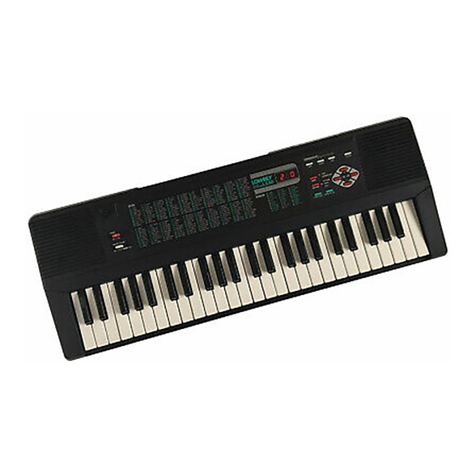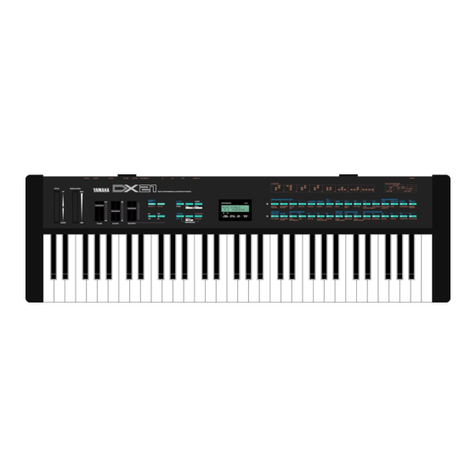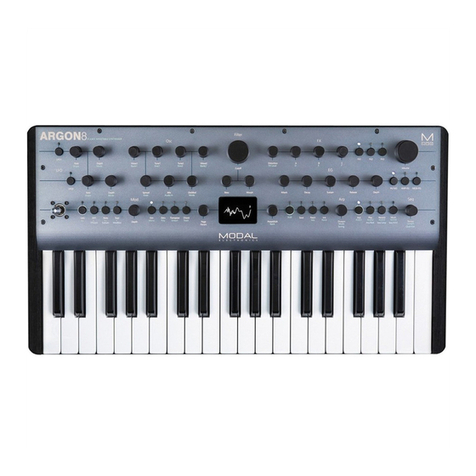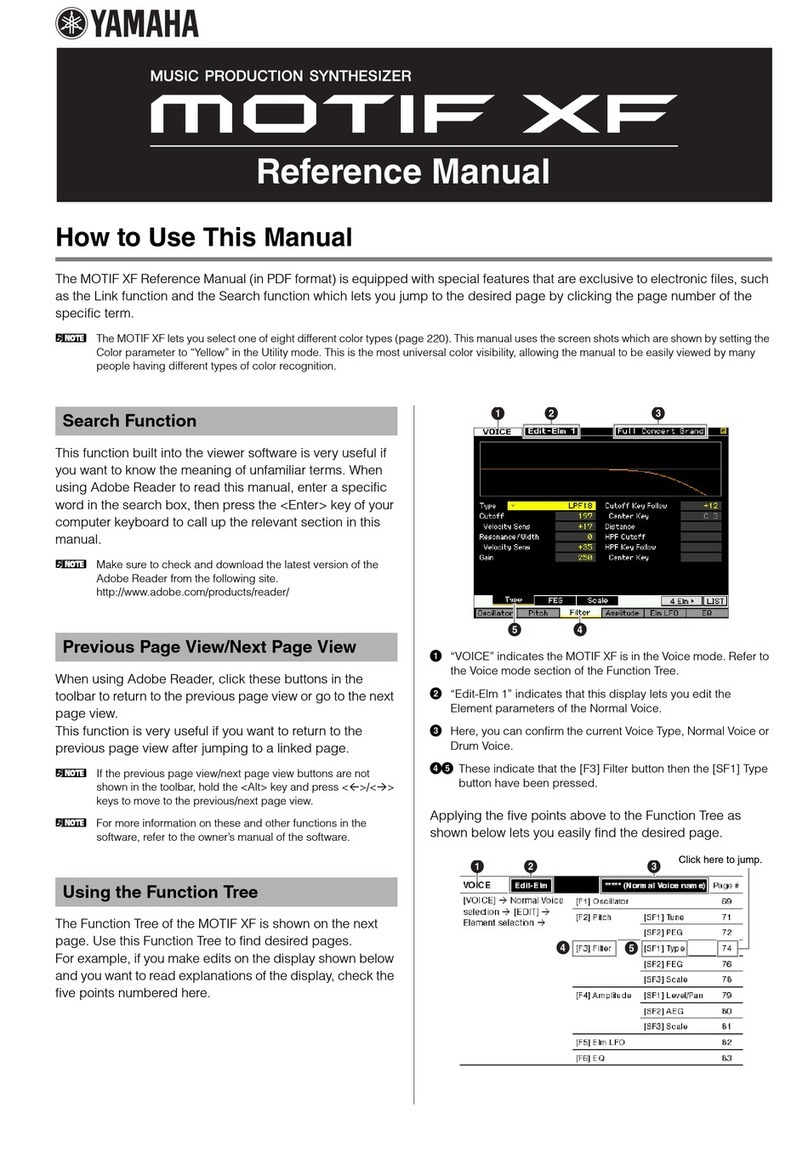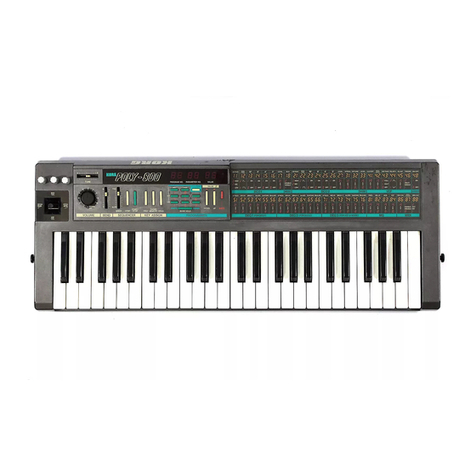
1. Comparison to the Organ 2. Theory of the Synthesizer
Asynthesizer is not an organ. The usual electronic organ is not
able to freely modify sound envelopes characterized by "Attack",
"Decay" and "Sustain" etc. all of which play an important role in
the quality of musical sounds. Here, "Attack" means the rising of
the sound, "Decay", the diminishing of the sound and "Sustain",
the maintaining of the sound, while "Envelope" is defined by the
curve of these characteristic elements.
The Synthesizer, however, can modify these elements to change
envelope characteristics and thus modify volume and tone to-
synthesize many sounds which are unlike any which can be
produced by conventional instruments, in addition to sounds
which are exactly like those of conventional instruments.
Thus, the Synthesizer has the inherent capability of extending the
range of musical conception through production of unique new
sounds.
The Voice Generator, which generates electronic signals that play
an important role in all electronic musical instruments, is
composed of the VCO "Voltage Controlled Oscillator", and its
musical interval is controlled by the voltage coming from the
keyboard switch. As the wave form of the music sound produced
by the VCO has many harmonics, the desired tone is produced
through aVCF or "Voltage Controlled Filter".
The function of the Filter is also dependent on the voltage.
The signal through the VCF is modified with regard to the rising,
falling or the maintaining of sound by the function of the VCA
"Voltage Controlled Amplifier".
Consequently, the VCO, VCF and VCA are the crux of Syn-
thesizer operation.
There are included various kinds of voltage generators to modify
these three circuits.
Firstly, when akey is depressed, voltage is supplied to the ADSK
until release of key. This voltage is the basis of the various
envelopes.
